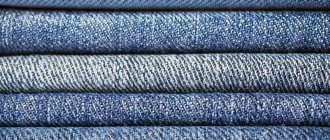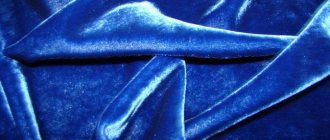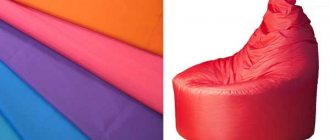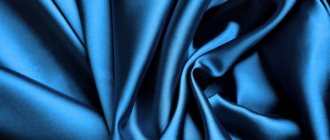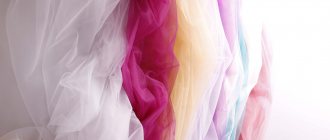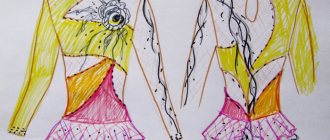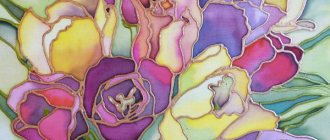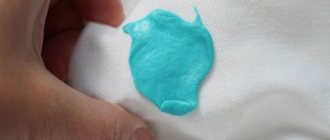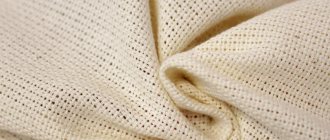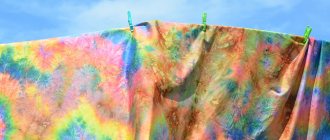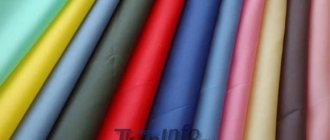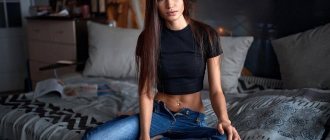Fabric for workwear is selected according to the characteristics responsible for comfortable and safe work. Work clothes are made from various materials. Some suits use thin, lightweight fabrics, while others require thick, fire-resistant fabrics. When choosing raw materials for workwear, it is worth taking into account the expected risk factors in the profession, its nuances, and seasonality. The materials have protective qualities, create convenience and comfortable working conditions.
Where does workwear begin?
The main functions of workwear are its protective properties and, of course, convenience; only after that, color preferences are placed in the background. An important detail when choosing clothes for work is its strength, wear resistance and durability. To ensure all this, it is necessary to select suitable materials with the desired weave of fibers and the correct combination of different types of fabric bases (natural, mixed, synthetic), insulation and the necessary accessories. Of course, the further use of the finished products will depend on the quality of tailoring, the method of fastening the seams, and even the quality of the selected accessories and threads. However, it is worth remembering that all damage and tears at the fabric joints along the seam can be repaired. But if integrity is lost due to the quality of the material of the upper fabric, such damage is much more difficult to restore, and even after this, the clothing may lose not only its original appearance, but also its protective properties.
The type and type of fabric used when sewing workwear is very important. To more accurately determine the type of fabric suitable for sewing work clothes for specialists in various industries, areas and types of activities, let’s look at the technical characteristics and basic properties of the most common fabrics.
Criteria for choosing fabric for workwear
When choosing fabric for workwear, be guided by the purpose of the form, hazard class and safety requirements. SWG professionals will develop uniforms for your company’s personnel with the required characteristics in accordance with GOST requirements. Our overalls are created using Scandinavian technologies and provide maximum comfort for workers in any field.
You can also order ready-made models in our online store. The catalog contains:
- winter, demi-season and summer workwear;
- signaling clothing;
- products made from fire-resistant fabrics;
- waterproof and antistatic clothing;
- suits for doctors;
- knitwear for active recreation;
- uniform for sports and fishing;
- PPE for head and face;
- safety shoes and much more.
Three pillars of the textile industry and their retinue
All fabrics are conventionally divided into 3 (three) types - natural, mixed and synthetic. In addition to the main varieties of outer and base fabrics, a sufficient amount of all kinds of fillers, linings, insulation, and special impregnations are used to make the product. Such impregnation can either enhance the technical characteristics of the fabric, or provide additional ones - resistance to fire, acids and alkalis, moisture resistance and other necessary protective properties. All of the above is directly used in the tailoring and production of workwear for each profession and specialty, depending on the safety requirements and working conditions at the enterprise.
First of all, it is worth remembering that whatever type of fabric the selected material for sewing workwear is, its quality should always be at its best. Otherwise, even the most resistant materials to more adverse influences will not be as durable as we would like.
Which material is better for workwear?
Much attention is paid to the issue of safety at enterprises, firms, industrial production and other facilities where special uniforms are required. To provide employees with the most comfortable working conditions, business owners invariably ask themselves which material for workwear is better, safer, and more durable. The properties and characteristics of the workwear directly depend on what fabric was used for sewing. Any set of uniform must meet two basic requirements: comfort and a high level of protection. Other preferred properties of workwear include:
- durability;
- easy care;
- air exchange;
- minimal contamination.
When choosing workwear, it is important to consider the working conditions for which it is intended - to provide protection against an aggressive environment. It is natural that all the desired requirements cannot be realized in one material, which is not always necessary if you carefully analyze the specifics of the profession.
Twill
Twill is able to withstand high and low temperatures and their sudden changes. This fabric provides good air exchange, does not accumulate static electricity, and is easy to care for. Twill fabrics have a characteristic relief on the front surface. It can contain both natural and synthetic fibers. The material is different:
- excellent thermoregulation - warms in the cold and cools in the heat;
- comfortable aeration – does not create a greenhouse effect when worn;
- hypoallergenic – does not cause irritation even with direct contact with skin;
- accepts various impregnations well - becomes impervious to chemical and oil stains or acquires water-repellent properties;
- hygroscopicity - quickly absorbs moisture and evaporates it to the surface;
- performance properties - does not wrinkle, does not fade, retains color, does not absorb odors, dries quickly, does not form pills.
The only drawback of twill fabric is the slight shrinkage of some products after washing.
Moleskin
Moleskine is suitable for use indoors where there are a large number of small particles in the air - the material does not allow even the smallest specks of dust to pass through. This is a fabric with super-dense weaving, thanks to which it acquires special performance qualities:
- strength and high wear resistance;
- easy removal of contaminants of various origins;
- convenience and comfort when wearing;
- no greenhouse effect, moisture accumulation, static electricity.
Some disadvantages include increased flowability (formation of fringes).
Cloth
The cloth will protect a person from splashes of hot metal, but it is very difficult to call it comfortable and pleasant to the body. Positive properties include:
- do not shift when cutting;
- cut well and do not crumble on cuts;
- easy to iron.
Clothes made from cloth wrinkle more often during use, some items may shrink, and such fabric cannot be washed in the usual way. It should be borne in mind that in its usual form, any fabrics from which workwear is made do not always provide optimal protection; in most cases, special coatings and impregnations are used to ensure the necessary qualities.
Cotton base of comfort
FAS fabric in denim style - New for Russia, popular in Europe
A striking representative of the material made from 100% natural cotton used for sewing workwear is FAS fabric, a leader in Europe. In texture and appearance, this fabric resembles denim, has an increased density, but at the same time, like all cotton products, it does not have any obstacles to the penetration of air under clothing for heat exchange. Many cotton fabrics, including FAS, have one minor drawback - the low resistance of the fibers to mechanical stress and damage. Although due to the very high density (320-380g/m2) of this material, this small drawback actually becomes insignificant. The fabric is used for sewing comfortable workwear with an increased service life, which is no less important and rightfully deserves special attention from the consumer. It is especially good in the warm season and for enterprises where the room temperature, although not too high, is sufficient to experience the discomfort and inconvenience that occurs when wearing synthetic clothing or clothing made from mixed types of fabrics, where artificial materials predominate. That is why, for these conditions, there is no better option than FAS
As for the increased temperature when washing clothes made from this type of fabric, we can say with confidence that the high temperature will not affect the quality of the product or its long-lasting color, and the fabric itself will retain its original appearance for as long as possible.
Fabric characteristics:
| Name | FAS (FAS) |
| Fiber Type Percentage | 100% cotton |
| Fabric weight | 320g/m2 – 380g/m2 |
| Shrinkage percentage | < 2% |
| Strength level | Very high, incl. and to break |
| Certificate | GOST 11209-85 |
The fabric is recommended for sewing special clothing according to GOST:
| GOST 27575-87/GOST 27574-87 | GOST 12.4.110-82 taking into account Amendment No. 2 |
| Recommended for the manufacture of work clothes and suits for both women and men, in order to protect against general industrial pollution (GPO) and mechanical influences. Complies with all necessary requirements, regulatory documents and specifications for fabrics for workwear. | Recommended for the manufacture of clothing and complete work kits for miners and coal industry workers. Satisfies all the requirements for complete protection against mechanical damage and industrial pollutants in specialized enterprises. |
Scandinavian workwear summer collection, almost all made from this type of material. Look and draw your own conclusions, the clothes are sewn and look impeccable. Moreover, the popular classic “Casual” denim style emphasizes her individuality.
Natural materials
As a rule, natural fibers are used for sewing clothes that are worn directly on the body: trousers and blouses, clothes for cooks, waiters, massage therapists, etc. The most pleasant to the touch will be calico (142 g/m2) - cotton fabric with a fine weave of threads.
For work associated with increased physical activity, twill is used - cotton fabric with a high-density weave (260 g/m2). Twill protects against mechanical damage, is wear-resistant and holds its shape well.
Cotton tarpaulins are used to make welding suits and clothing for metallurgists. The canvas is treated with a fire-resistant agent and acid-alkali-resistant impregnation, which makes it resistant not only to high temperatures, but also to chemical reagents.
FAS material looks like denim, but is much denser and more durable. The fabric has antistatic properties and meets the highest dust resistance class. Clothing made from this fabric is an excellent option for the mining industry, woodworking, and cement factories.
Why do work clothes need breathing?
There is no normal heat exchange - there are no comfortable conditions for performing work. That is why workwear requires “fresh breath”, or rather, breathability, hygroscopicity, vapor permeability - indicators that increase the worker’s ability to most successfully perform his functional duties or, simply, to work normally. And if the fabric used for the production of special clothing does not meet these indicators (by the way! provided for by GOSTs and technical specifications), then the product itself is unlikely to contribute to the fulfillment of the tasks assigned to it.
Stretchtex
Stretchtex is one of the new sports representatives of modern cotton fabrics with a small addition of spandex, which provides a full stretch effect. Having all the main characteristics of cotton fabric, stretchtex can be classified as a highly hygienic material - heat transfer and breathability are at the highest level, and at the same time excellent stretchability, which allows you to significantly expand the range and range of applications of fabric products, as well as significantly improve wearing comfort. .
Thanks to its special finishing, Stretchtex is much more pleasant to the touch and softer than other materials, which allows it to be successfully used as the basis for summer collections.
Now workwear can also contain “elastic” fabrics, which we are already accustomed to in everyday clothing.
With long-term use, Stretchtex does not provoke irritation or allergic reactions, and high-quality cotton fiber makes products made from it light, durable and abrasion-resistant.
On our website, Workwear for Professionals Stretchtex is presented in products of comfortable clothing for work from the SPEC Avangard collection.
Main characteristics of the fabric:
| Name | Stretchtex |
| Fiber Type Percentage | 97% cotton; 3% spandex |
| Weight | 295g/m2 |
| Shrinkage percentage | <1,5% |
| Strength level | increased |
| Washing temperature | 85oC |
| Recommendations for use for sewing workwear according to GOST 25295-03 |
| Use for sewing special, corporate clothing, as well as for workers and employees of engineering and technical personnel - men and women. In full compliance with all technical, protective and operational standards. |
Synthetics
The most common synthetic fabrics are nylon and Oxford. The materials perfectly protect against snow and rain, wind, dust and dirt. Most often they are used to make raincoats and jackets. Soft and pleasant to the touch fleece or faux fur is used as insulation.
Features of materials for workwear
Material for workwear must meet the following requirements:
- high degree of comfort;
- hypoallergenic;
- protection from negative external factors;
- aesthetics.
It is important that the overalls help to perform work duties; for this purpose, the models are equipped with a large number of pockets and carabiners. For outdoor work, there are options with detachable hoods and high stand-up collars. The fasteners are usually covered with wind flaps, which prevent precipitation from getting under the protective clothing.
Summary table of fabrics for sewing workwear
The SWG company is engaged in tailoring custom-made uniforms for any field of activity. We take into account the characteristics of the material for workwear and select the highest quality and durable fittings. You can see the detailed characteristics of the materials in the table below.
| Fabric name | Fabric structure |
|
What is stretch effect?
If you wear jeans and go to dance floors, then you probably enjoy clothes that have the ability to stretch. Convenient - isn't it? But if you still have to move a lot at work, then you probably experienced discomfort from wearing standard “harsh” work clothes. Now this problem has been successfully solved for workwear as well. The Avangard Workwear collection, Cherva Olza will allow you to do your work with extensible pleasure!
The ability of workwear using Elastane to instantly restore its shape reduces the gap between it and fashion trend products, and makes it three times more attractive:
Comfort + Protection + Image = Good mood and successful completion of work tasks
We listed the new items , but the classics of the genre make up a whole host of material options and endless fabric horizons
In addition to new and popular cotton fabrics and cotton fabrics with additional artificial fibers, to increase the technical characteristics of the material and extend its service life, a number of natural classic fabrics are used, which are often used for production purposes for various needs.
Workwear for rent from Lindstrem
Lindstrem offers rental of workwear that meets all stated requirements and standards. We have long taken a strong position in the market and managed to gain credibility among many clients. We cooperate with both large organizations and small businesses. Cooperating with us is very simple: you just need to place an order, and we will offer a convenient time for fitting. If necessary, adjustments will be made to suit the equipment of each employee. Our assortment includes standard collections of blue, white and green colors. Renting workwear is especially in demand at facilities where the workforce is constantly changing - the manager does not have to purchase a new set of workwear every time, it is enough to simply make an exchange. Lindström provides maintenance (industrial washing), repair or replacement of clothing when it is unusable.
Fabrics of natural origin
Calico is a fabric that is widely used in textiles; even bed linen, for the most part, is made from this material, so each of us knows what it looks like and feels like. Calico is a natural textile product made from 100% cotton.
Calico perfectly absorbs moisture, has high breathability and is considered a good hygienic and highly environmentally friendly material. Among the disadvantages of the fabric is a relatively high percentage of shrinkage of products during washing, especially the initial one (the indicator depends primarily on the surface density and quality of finishing of the material), as well as the presence of the “corrugated paper” effect, especially in places of constant folds and after water treatment.
Specifications:
| Name | Calico |
| Fiber Type Percentage | 100% cotton |
| Weight | 125-146 g/m2 |
| Shrinkage percentage | 2-3 % |
| Strength level | average |
| Washing temperature | 60-100°C depending on the purpose |
In workwear it is still used for the manufacture of signal vests, work coats and other lightweight products in the range.
Gauze
A very thin (discharged) fabric resembling a net in appearance due to the low density of the threads. This is why the fabric appears transparent. Gauze has high hygienic and hygroscopic properties, does not require special care, and is easy to wash. Contains natural cotton fibers. Used as a lining intermediate material and for technical purposes.
Specifications:
| Name | Gauze fabric |
| Fiber Type Percentage | 100% cotton |
| Weight | 30-36 g/m2 |
| Shrinkage percentage | Up to 85% |
| Strength level | Very minor |
| Washing temperature | 30°C and depending on the purpose |
Twill
Twill refers to two types of fabric, natural and mixed, as well as two types - garter and diagonal. Twill is a dense fabric with increased resistance to mechanical stress, strong and durable, plastic and shape-resistant, made from high-number cotton yarn. Strength characteristics are ensured due to the special weave of the threads that make up the material. The secret is that the yarn fibers are not just tightly connected to each other, but twisted together. The result is a thread that looks like a miniature rope. In addition to strength, twill has good breathability, hygroscopicity and antistatic properties. With the addition of artificial polyester fibers, air exchange rates are reduced, but wear resistance and tear characteristics increase.
Specifications:
| Name | Twill |
| Fiber Type Percentage | From 100% cotton to 33% cotton and 67% polyester |
| Weight | 350 g/m2 – 185 g/m2 |
| Shrinkage percentage | 0-1 % |
| Strength level | High |
| Washing temperature | 40-80°C depending on the composition |
Moleskin
Moleskine is a type of high-fiber cotton fabric with characteristics that provide protection against the smallest particles of dust and other pollutants. The material has a smooth surface, which is why small particles arising during production activities, chips, dust, metal particles, scale, actually roll off it. Moleskin, impregnated with a special solution, not only does not allow pollutants to linger, but also provides a certain degree of protection from exposure to elevated temperatures. White moleskine is used in the manufacture of clothing for work in areas of high radiation.
Specifications:
| Name | Moleskin |
| Fiber Type Percentage | 100% cotton fabric |
| Weight | 250-280 g/m2 |
| Shrinkage percentage | 0-1 % |
| Strength level | High |
| Washing temperature | depending on the purpose of the product |
Shawl fabric
The fabric has a very dense plain weave of threads, which has excellent properties of not allowing water particles to pass through. After applying impregnation to increase the water-repellent characteristics, the garter fabric becomes the basis for the manufacture of waterproof and water-repellent clothing for special purposes. It is not for nothing that the material is associated with the Tent; before the advent of the younger, improved generation, it served for quite a long time, regularly and faithfully for protection from wind, rain and snow, being a kind of industry leader.
Considering that the fabric is based on cotton fibers, the fabric is comfortable to wear, breathes well, and also has very high strength characteristics.
Fabric description:
| Name | Shawl fabric |
| Fabric structure | 100% cotton fabric |
| Weight | 200-400 g/m2 |
| Shrinkage percentage | 1-2 % |
| Strength level | Very high |
Cloth
Cloth is a natural fabric, but to increase its service life, artificial polyamide fibers are added to the composition of the material. The fabric is mainly used for the manufacture of workwear for metallurgists and welders (with fire-resistant impregnation). When acid-alkali-resistant impregnation is applied to the base of the fabric, cloth clothing serves as reliable protection against the destructive effects of acids and alkalis.
Specifications:
| Name | Cloth (with OP impregnation, with acid-base acid impregnation) |
| Fiber composition | 80% wool 20% polyamide |
| Weight | up to 760 g/m2 depending on application |
| Shrinkage percentage | 2-3.5% depending on composition and density |
| Strength level | Very high |
Tarpaulin
Another fairly common name for tarpaulin is canvas. Very dense fabric with very high strength characteristics. In places where there is an increased risk of fire or damage to fabrics from splashes of molten metal or sparks, it is necessary to use a suit made entirely of canvas or with stripes made of canvas on the front of the product. To increase the protective properties, the fabric is impregnated with a fire-resistant substance.
Canvas has a long history: it has been used for quite a long time to make waterproof clothing for sailors, fishermen, uniforms, and today its main use is clothing for welders and mittens.
Specifications:
| Name | Popular canvas (tarpaulin) |
| Fiber composition | 50/50% linen and cotton |
| Weight | up to 550g/m2 depending on application |
| Shrinkage percentage | 2 depending on composition and density |
| Strength level | Very high |
Fabrics for sewing workwear and their characteristics
Based on the most successful, from the point of view of consumers, VIMPEL® and RITM® suits, we offer you to make suits in accordance with the requirements of the corporate style of your enterprise. Currently, this service is becoming more and more in demand, because... Requirements for the safety and appearance of workers at Russian enterprises are increasing. We can offer you a choice of well-proven practical mixed and synthetic fabrics with oil- and water-repellent impregnation; different colors and densities. Two- and even three-color combinations can be used for sewing. Additional elements can be introduced, for example, elbow and knee pads, finishing with reflective strips for work in conditions of poor visibility. At your service is an expanded range of heights - heights from 158 to 200 cm, sizes from 44 to 66. The price and product code for custom-made products are not indicated, because Each order is assigned a unique code. When ordering again, you simply name this code, and TRACT specialists will recreate the model created with your participation. Recommended number of suits for special tailoring: 500 summer sets and 800 winter sets. Please note that the price and terms are calculated for each batch separately.
NATURAL FABRICS
Calico
Calico perfectly absorbs moisture, has high breathability and is a good hygienic and highly environmentally friendly material. Thanks to these properties, it is irreplaceable for the production of workwear used in conditions of elevated temperatures. Composition: 100% cotton. Surface density: 115 g/m2; 125 g/m2, 135 g/m2, 142 g/m2 Colors: blue, olive, white, black. Finishing: NO.
TWILL. MASTER-UNIVERSAL (produced by the Rodniki-Textile plant, Russia)
The high cotton content in Master-Universal fabrics best ensures the hygienic properties of a work suit - breathability, hygroscopicity. The fabrics allow the skin to breathe, do not absorb odors, are extremely comfortable to wear, and are resistant to tearing and abrasion. The unique fabric manufacturing technology guarantees minimal shrinkage and low peeling properties. The finished product washes well and is easy to iron. The twill structure of the fabrics optimally provides strength characteristics and protects a person from mechanical risks. Composition: 100% cotton. Surface density: 185 g/m2 (from 66 UD), 250 g/m2 (from 38 UD). Final finishing: VO Color: white, dark blue, cornflower blue, dark cornflower blue, gray, black.
PRESTIGE
Due to the crepe weave, natural cotton fabric has excellent dimensional stability; the finished products do not deform during use and do not stretch even in the area of the elbows and knees. Composition: 100% cotton. Surface density: 235g/m. Final finishing: VO. Dark-blue colour.
BAMBOO STYLE
In the production of BAMBOO-STYLE fabric, shaped twist threads are used, due to which the fabric has an unusual appearance and special properties: resistance to breaking loads is 12% higher than the best twill, abrasion resistance is 32% higher, the fabric has minimal performance shrinkage: warp “−0.5%”, weft “+1.2%”. These characteristics have a significant impact on the service life of products made from BAMBOO-STYLE fabric. Such products are more durable and wear-resistant than conventional analogues. The fabric has excellent hygienic properties: it “breathes” and absorbs moisture well. All this ensures maximum wearing comfort. It is impossible not to note the aesthetic properties of the fabric; the presence of differently thickened threads in the base of the fabric, arranged in a chaotic manner, gives the fabric a modern, designer, noble look. The appearance of products made from such fabric does not evoke associations with simple workwear. Composition: 100% cotton Surface density: 320 g/m2. Final finishing: VO. Color: sand.
DIAGONAL
The fabric received this name due to its textured appearance, where the diagonal ribbed pattern is very clearly visible. The fabric is made of cotton yarn and has good hygienic properties and is antistatic. Composition: 100% cotton. Surface density: 240 g/m2. Color: blue. Finishing: NO.
TENT CLOTH (tent fabric)
The fabric has a very dense plain weave of threads, which has excellent properties of impervious to water particles. It is not for nothing that she is associated with the Tent. Before the advent of a younger, improved generation of fabrics, it served for quite a long time, regularly and faithfully to protect against wind, rain and snow. Considering that the fabric is based on cotton fibers, the fabric is comfortable to wear, breathes well, and also has very high strength characteristics. Composition: 100% cotton. Surface density: 250 g/m2. Final finishing: VO. Color: blue, olive.
MIXED FABRICS
TI-SI (mixed in yarn)
The fabrics are made from twisted blended yarn and have a matte surface. The combination of synthetic and natural fibers using this method of joining (spinning method) provides clothing with excellent performance properties. For the production of fabrics, the highest quality raw materials are used, no regenerated secondary raw materials are used. The increased polyester content allows you to significantly increase the strength characteristics of the fabric without compromising its hygienic properties. The cotton content ensures good breathability and hygroscopicity. The matte effect gives the products a noble look. The fabrics are characterized by high wear resistance, minimal shrinkage and ease of washing. Composition: 65% polyester, 35% cotton Surface density: 120 g/m2 (AYAKS, LUX-120), 150 g/m2 (AYAKS-150), 200 g/m2 (Forward-200, Soyuz-1) , 240 g/m sq. (Forward-240, Soyuz-2) Final finishing: VO Color: 120 g/m sq. - dark blue, cornflower blue, green, white, burgundy, light pink, dark blue, coral, light blue, turquoise , chocolate, light green (mint) 150 g/m2 – dark blue, sea wave, cornflower blue, red, green, yellow 200 g/m2 – dark blue, green, gray, red, black, orange, camouflage 240 g / sq. m – dark blue, dark gray, grey, dark green, cornflower blue, burgundy, red, black, orange, lemon, sea wave.
LEGION-Optima 250 (produced by the Rodniki-Textile plant, Russia)
Legion Optima 250 is a new solution for those customers who place high demands on the strength characteristics of fabrics enriched with natural fibers. Thanks to the high content of natural cotton, the fabric breathes, absorbs moisture well and removes it from the body. High tenacity polyester fibers provide strength, low shrinkage and ease of care. Legion Optima 250 is 1.5 times stronger than conventional cotton fabrics of the same density. Composition: 60% cotton, 40% polyester Surface density: 250 g/m2 Finishing: VO Color: black, emerald, gray
EXPERT-STANDARD (produced by the Rodniki-Textile plant, Russia)
Blended fabric Expert-Standard C25, enriched with cotton, has high physical and mechanical characteristics due to the use of durable new generation polyester fibers. They give the fabric the property of being wrinkle-resistant, the fabric drapes well, is easy to wash, and retains its softness without the use of additional softeners and conditioners during the washing process. The fabric has low electrification, dust particles do not stick to the suit. The polyester component is displayed on the surface of the fabric, and on the wrong side of the fabric there is only 100% cotton. This is as hygienic as possible for the human body. Composition: 80% cotton, 20% polyester. Surface density: 250 g/m2. Final finishing: VO. Color: grey, black, red
PHLOX
An excellent solution for the food industry and medicine, can withstand washing up to 60°C. Composition: 60% cotton, 40% polyester. Surface density: 160 g/m. Final finish: permanent finish. White color.
SKYFLEX (Skyflex)
SKYFLEX fabric is perfect for medical, chef and service clothing. Due to the special “mechanical stretch” weave, it has the ability to stretch without having elastomer threads in the structure, which allows the clothes to fit perfectly and retain their original shape after repeated washes without loss of elasticity, even at a washing temperature of 60°C. Composition: 55% cotton, 45% polyester. Surface density: 190 g/m. Final finish: permanent finish. White color.
SATORI™
SATORI™ fabric provides a high level of comfort in the daily activities of a medical worker. • High breathability of the fabric allows the skin to “breathe”. • Products can be autoclaved, bleached and washed frequently at high temperatures (up to 75°C) to effectively remove dirt and bacteria! • Medical clothing made from SATORI™ fabric does not fade, almost does not wrinkle, holds its shape and retains its color. • With SATORI™ fabric you can forget about annoying “pillings”. • No formaldehyde in the fabric - no allergies or irritations. Composition: 50% Cotton, 50% Polyester. Surface density: 145 g/m2
SATORI LITE™
Thin, lightweight fabric Satori ® Light guarantees comfortable work all day long, even in the hottest conditions: • 50% high-quality eco-friendly cotton makes the fabric pleasant to the body, allows the skin to “breathe”, and the worker feels great throughout the entire shift! • 50% polyester in the fabric increases the wear life of the product and the preservation of its appearance from day to day! The fabric is ideal for clothing and uniforms of service personnel, workwear for food production workers. It washes well, does not turn yellow, does not lose the brightness of colors and does not pill, providing a neat appearance. Final finishing: “easy maintenance”. Composition: 50% Cotton, 50% Polyester. Surface density: 115 g/m2 Color: turquoise, blue.
TOMBOY™
TOMBOY® (Tomboy®, produced by Adventum Technologies, Russia) • High-strength, wear-resistant fabric for general industrial clothing; • Workwear made from TOMBOY fabric is durable, convenient and comfortable due to good breathability and hygroscopicity; • The suit retains its appearance throughout its service life: the color does not fade, does not fade, the product does not shrink or stretch with frequent washing; • With TOMBO fabric you can forget about the annoying “pillings” that the consumer encounters in standard workwear • Protects against ultraviolet radiation! • The “Easy Care” finish allows you not to iron the suit after washing – just dry it flat! • Frequent high-temperature washes up to 85°C are recommended; Composition: 67% Polyester, 33% Cotton. Easy Care Finish Surface Weight: 245 g/m2
CRESTA (manufactured by Adventum Technologies, Russia)
The fabric contains a unique fiber called Elastolefin (EOL). Thanks to it, the fabric is able to provide comfort, freedom of movement and dimensional stability while withstanding frequent and high-temperature industrial washing. As a rule, body movement creates a critical load on the tissue at the bend points (elbows, knees). By combining the strength of polyester and the breathability of cotton with a fiber that provides permanent elasticity and shape stability, new levels of fabric movement can be achieved. This allows the garment to be flexible without compromising the design of the garment, supporting the natural movement of the body in various activities, while maintaining its original shape, appearance and properties. The fabric also provides excellent light fastness, shrinkage and pilling resistance. Color: dark blue, cornflower blue. Composition: 64% polyester, 33% cotton, 3% EOL. Finish: "Easy care". Surface density: 265 g/m2
GRETA-T (manufactured by MOGOTEKS, Belarus)
Composition: 57% cotton, 43% polyester, 234 gsm
GALAXY (produced by Melange-Textile, Ivanovo)
Composition: 48% cotton, 52% polyester, 214 g/m2 Blended fabrics are made in such a way that the polyester thread is brought to the front surface, which ensures high wear resistance and easy removal of dirt. Cotton on the reverse side of the fabric provides comfort and good moisture absorption. Water-repellent finish protects against rain, snow, and dirt. In addition, the fabrics are characterized by good dimensional stability, low shrinkage and color fastness. Final finishing: VO. Color: dark blue, cornflower blue, green, gray, black, orange red, burgundy.
SVETOZAR-3 (manufactured by Melange-Textile, Ivanovo)
A blended fabric with a polyester thread at the base and cotton-polyester yarn in the weft (wrong side). It has high tensile strength and good hygienic properties. Composition: 40% cotton, 60% polyester. Surface density: 245 g/m2. Final finishing: VO. Color: dark blue, cornflower blue, green, gray, black, orange.
FOREMAN (Foreman, produced by Adventum Technologies, Russia)
Durable and wear-resistant. The soft matte sheen and the fabric's resistance to light and washing give the product an attractive appearance. FOREMAN fabric reliably protects from wind, moisture, snow and is resistant to low temperatures. The special “beaver” construction of the FOREMAN fabric and the oil-water-repellent Teflon® finish provide protection against various contaminants, acid solutions up to 80% and make the suit easy to clean. Composition: 67% polyester, 33% cotton. Surface density: 250 g/m2. Final finish: Teflon. Color: blue, black, orange fluorescent.
SYNTHETIC FABRICS
NORTHSEA® (Northsea®, produced by Adventum Technologies, Russia)
A suit made from NORTHSI® fabric provides better protection from rain, snow and wind thanks to a high-tech breathable PU membrane: • Waterproof 10,000 mm.water column. Allows clothing to withstand prolonged downpours. • Frost resistance - the fabric does not “tan” or crack even at an extremely low temperature of -40°C. • Vapor permeability 9,000 g/m2/day – the PU membrane removes vapors from the underwear space, providing comfort. • Preservation of all protective properties after washing or dry cleaning - no deformation or peeling. • Unique silky structure of micropolyester. • Recommended for use in the IV and Special climatic zones of Russia. Composition: 100% Micropolyester. Teflon® finish Surface density: 135 g/m2.
SNOWWALL (Snowall Max, produced by Adventum Technologies, Russia)
The fabric has a special design: 1 layer - 84% polyamide; 16% polyester, peach effect; 2nd layer - membrane, water resistance - 9000 mm.water column, vapor permeability 8,000 gm2/24 hours. This implies: increased strength due to the combination of polyamide and polyester fibers; increased heat-protective properties - a specially developed air-intensive complex “dobby” weave and easy-to-pile “peach-processing” give the fabric increased heat capacity due to the presence of a large number of cavities in the structure; increased comfort - due to the presence of a “high” membrane in the structure - the material has a quite “solid” ability, even by ultra-modern standards, to remove vapors from the body: water resistance - in case of precipitation, the fabric withstands moisture, leaving the interior of the product dry, which is ensured by a high-tech DWR finish ; increased plasticity - due to the weave, the fabric is flexible enough to implement ergonomic designs in clothing. Surface density: 250 g/m2. Final finish: DWR (wear-resistant, water-repellent). Color: terracotta, red, black, dark gray.
SOFTSHELL
SOFTSHELL is a modern material with a multilayer structure. In the production of TRACT clothing, a classic three-layer softshell is used - elastic top, MEMBRANE and fleece. In this three-layer version, the bottom layer removes evaporation and sweat, retains heat, the middle one transfers evaporation and moisture to the outer layer, does not blow or get wet, and the outer one removes moisture, while protecting from wind and rain. Surface density: 240 g/m2; 325 g/m sq. Color: gray, dark blue.
TASLAN (Taslan 228 T, Taslan 189 (330) T)
A beautiful modern material with an unusual weave structure and a waterproof coating on the inside. A distinctive feature of Taslan is its rough surface and characteristic scar, which is especially clearly visible on Taslan 189T (330T). The fabric is resistant to friction, repeated bending and ultraviolet radiation, light and pleasant to the touch, dries superbly, and retains a stable color even after repeated washing and ironing. Composition: 100% polyester. Surface density: 115 g/m2, 135 g/m2. Final finishing: PU+ WR (VO). Color: lilac, turquoise, blue, cornflower, dark gray, black, red.
OXFORD (210T, 240T, 420 T, 600 D)
Oxford is a lightweight plain weave fabric made from synthetic fibers with a special coating. The coating is applied to the inside of the fabric and can be PU (polyurethane) or PVC (polyvinyl chloride). This is what makes Oxford fabric waterproof and prevents dirt from accumulating between the fibers. The fabric has good strength indicators, is resistant to abrasion, temperature changes, and waterproof. Composition: 100% polyester or 100% polyamide. Surface density: 110 g/m2, 145 g/m2, 190 g/m2, 300 g/m2 Final finishing: PU+ WR (VO), PVC. Color: dark blue, black, orange, gray, red.
DOBBY (CAT'S EYE, “cat's eye”)
The fabric has an original structure, which gives products made from this fabric an impressive appearance. The fabric is wear-resistant, waterproof and water-repellent. It has air-exchange properties, so even at low temperatures and during intense physical activity, icing does not occur on the inside of the fabric, which is typical for cheap synthetic fabrics. Composition: 100% polyester. Surface density: 150 g/m2 Final finishing: PU+ WR (VO). Color: blue, black, red.
CORDURA®
CORDURA is a thick fabric made of polyamide (nylon), we have high wear-resistant qualities, thanks to the special structure of the thread (made from chopped and twisted fibers), abrasion resistance is 4 times higher compared to simple polyamide. Composition: 100% polyamide. Surface density: 180g/m. Final finishing: VO, PU (PU).
RAINFORCE RIPSTOP
Lightweight membrane fabric providing better protection from wind, rain and snow. Rip-stop weave means the product is highly durable. Reinforcing threads prevent fabric from coming apart in places of small punctures and damage. Water resistance 10,000 mm.water column. Allows clothing to withstand prolonged downpours. Frost resistance - the fabric does not “tan” or crack even at an extremely low temperature of -40°C. Vapor permeability 9,000 g/m2/day – the PU membrane removes vapors from the under-clothes space, providing a comfortable microclimate. Preservation of all protective properties after washing or dry cleaning - no deformation or peeling. Recommended for use in the IV and Special climatic zones of Russia. Composition: 100% Polyester. Teflon® finish Surface density: 150 g/m2.
SPECIAL PURPOSE FABRICS (FOR PROTECTIVE CLOTHING)
TERMOSHIELD MODACRYL (Termoshield Modakryl)
Thanks to the balanced combination of meta-aramid fibers and Protexa in the fabric, high hygroscopicity and breathability are achieved, which allows you to maintain optimal body temperature. Heat-resistant fibers in the composition do not change properties and provide the maximum level of protection with minimal weight, which is more than 20% higher compared to other materials of the same density. Composition: 40% Metaaramid, 60% Protex. Surface density: 240 g/m2.
MOLESKINE (produced by the Rodniki-Textile plant, Russia)
The high ergonomics of moleskin fabric is especially important for workers whose work involves high mobility when working with equipment. Clothing should not hinder movement, but, on the contrary, provide ease when manipulating equipment. Moleskine has a reinforced satin weave, which gives the fabric softness and lightness without reducing its strength characteristics. The low density of the fabric and excellent fire-resistant properties can significantly reduce the weight of the suit and provide the necessary protection. The fabric is resistant to decontamination. Composition: 100% cotton. Surface density: 280 g/m2. Final finishing: TO (fire retardant finishing). Black color.
TARPAPE (semi-linen canvas), produced by Vladimir Textiles
Dense, durable fabric, resistant to mechanical stress. Manufactured according to GOST 15530-93. Fireproof impregnation of the fabric provides resistance to burning for at least 50 seconds, protects against sparks, splashes of molten metal, and thermal radiation. Recommended for enterprises with increased requirements for workwear with fire-resistant impregnation. Composition: 50% linen, 50% cotton. Surface density: 550 g/m2 Final finishing: OP - fireproof impregnation. Khaki.
MINER
Dense cotton-polyester fabric with satin weave, designed for the production of miners' suits and other special clothing with increased requirements for dust resistance. The high cotton content ensures good hygroscopicity and breathability. Polyester makes it durable and wear-resistant. Composition: 80% cotton, 20% PE Surface density: 395 g/m2. Final finishing: COMP (anti-rot + water-repellent). Color: dark grey.
CLOTH
The fabric is coarse wool. Good thermal insulation, fire resistance, breathability. To sew an acid-proof suit, cloth with acid-proof impregnation is used. Composition: 80% wool, 20% polyamide. Surface density: 760 g/m2. Final finishing: fireproof impregnation, acid-proof impregnation. Color: grey.
EXPERT-STANDARD (produced by the Rodniki-Textile plant, Russia)
Blended fabric Expert-Standard CA25, enriched with cotton, has high physical and mechanical characteristics - high strength and wear resistance. Antistatic properties are ensured thanks to the mesh contour in the fabric structure, formed by high-strength metallized threads. The threads prevent the accumulation of charged particles on the surface of the fabric and are highly conductive. When it hits the fabric, the charge flows along a closed loop of threads down the suit. Metallized threads are able to maintain their properties in extreme conditions - at high and low temperatures, high humidity. Expert-Standard CA25 fabric with combined protection has passed the test tests at many Russian enterprises and received the international quality certificate EN340. Composition: 80% cotton, 20% polyester, incl. antistatic thread Surface density: 250 g/m2. Final finishing: NMVO. Color: red, black, blue, cornflower blue, dark gray.
TERMOSHIELD PS (Termoshield)
The fabric has permanent fire-resistant properties, protection upon contact with heated surfaces up to 500°C, siliconized coating increases the wear resistance of the fabric by 70%, resistance to burning is 950 seconds! Composition: 50% Panox®, 50% Paraaramid. Surface density: 380 g/m. Final finishing: siliconization. Green color.
FR – 500 FLAME RESISTANT FABRIC with Proban® technology
Permanent flame retardant properties, high strength with the softness and comfort of cotton. Composition: 100% Cotton. Surface density: 490 g/m. Final Finish: Proban® Fire Retardant Technology. Black color.
Master Universal SA 25 art. S38A-YUD ANTISTATIC, FIRE-RESISTANT (produced by the Rodniki-Textile plant)
The fabric is designed specifically for oil and gas sector enterprises for comprehensive protection against open flames and elevated temperatures, static electricity, moisture, oils and petroleum products. - does not support combustion and does not melt under short-term exposure to open fire and high temperatures - does not smolder after being in the flame for 30 seconds - 99% consists of natural raw materials, which ensures comfortable use of workwear made from this fabric and, as a result, high labor productivity working personnel. — The fabric has low shrinkage rates after repeated washings. — Has high levels of breathability and hygroscopicity Composition: 100% cotton. Surface density: 280 g/m2. Color: dark cornflower, black. Final finish: oil-oil-water-repellent, fire-retardant.
PROtect 230 (manufactured by MOGOTEKS, Belarus)
High-quality antistatic fabric with comprehensive protection is intended for the manufacture of special clothing for oil and gas industry workers. The fabric has a special design - antistatic yarn is built into the structure of the fabric, which ensures that the “specific surface electrical resistance” indicator after washing and dry cleaning remains at a level of no more than 107 Ohms for the entire life of the product, i.e. protects against the accumulation of static electricity, thereby reducing the risk of sparks and fire. The protective properties of the fabric are additionally ensured by final finishes that are resistant to washing. The specified fabric is certified by Gaztest LLC and has a conclusion on the possibility of use from GAZPROM GAZOBEPASNOst LLC. Composition: 60% cotton, 40% polyester, including antistatic yarn Surface density: 230 g/m2 Final finishing: NMVO-U (oil-oil-water-repellent, wash-resistant) Color: dark blue, cornflower.
WORKER and knitted fabric WORKER jersey 220 FR
Fire-resistant fabrics of the WORKER E series are intended for the manufacture of special fire-resistant workwear for workers in the energy sector. Due to the use of advanced fire-resistant impregnation, the fabrics have high protective properties, allowing the production of suits with various levels of protection for use in hazardous industrial areas. Due to the increased content of high-quality cotton fibers and the use of ring yarn, the fabric has high breathability, excellent hygroscopicity and is pleasant to the touch. Suits made from WORKER E fabric are a high stable level of protection from convective heat and thermal radiation, high dye fastness, which allows you to maintain the appearance of the product throughout its entire service life, the use of durable, combed yarn made from high-quality cotton with a multi-stage harsh cleaning system makes the fabric more durable and wear-resistant. Heat-resistant knitted fabric WORKER jersey 220 FR The fabric is made of 100% cotton with improved fire-retardant impregnation. Heat-resistant knitted fabric has excellent hygroscopic properties, softness, good breathability and protective properties. The advantages listed above make WORKER jersey 220 FR an indispensable material for the manufacture of heat-resistant underwear, heat-resistant gloves and heat-resistant balaclava, designed to protect against the effects of thermal risks of an electric arc. Composition: 87% cotton, 12% nylon, 1% antistatic thread. Surface density: 265 gsm, 320 gsm; 185 gsm. Final finishing: fire-resistant impregnation.
HIGHWAY
MAGISTRAL fabric is resistant to CLIMATIC INFLUENCES (precipitation, sunlight) and MULTIPLE washings. Background indicators and color coordinates remain within the regulatory requirements for a product of protection class 3 throughout the ENTIRE OPERATION PERIOD! Composition: 50% cotton, 50% polyester. Surface density: 245g/m. Final finishing: VO. Color: fluorescent orange, black.
INSULATIONS
FIRESTOP
The OGNESTOP insulation will not become a source of ignition for the suit, since it does not support combustion and smoldering due to the use of fire-resistant polyester fibers (EN 14116 index 1), which are preserved after numerous washes throughout the entire service life of the product. When using OGNESTOP insulation, winter clothes will retain their excellent appearance thanks to reliable thermal bonding technology and the absence of fiber migration inside the insulation. Composition: 100% Polyester. Surface density: 150 g/m2.
BATTING
Batting is a representative of non-woven fabrics. It is considered the most “ancient” and previously widespread insulation. The raw materials used are recycled cotton and synthetic fibers, which are combed using special equipment. For the production of workwear, TRAKT uses canvas batting. It is formed by zigzag quilting along the entire length of cotton or polyester threads of canvas, formed by carding and feeding using a spreader and conveyor to the head. Composition: 70% cotton, 30% polyester. Surface density: 250 g/m2.
SINTEPON
In the production of TRACT workwear, thermally bonded padding polyester made from 100% polyester whole virgin fibers is used. This synthetic padding polyester has excellent heat-protective properties and does not lose quality as a result of being crushed or washed, remaining voluminous and elastic. To prevent migration of fibers to the surface of fabrics, both sides of the padding polyester are calendered. Composition: 100% polyester. Surface density: 120 g/m2
SHELTER
Shelter brand insulation is a thermally bonded high-volume non-woven material. “Shelter” got its name from the English word “Shelter” - a reliable shelter. Produced in Podolsk, Moscow region. Thin hollow polyester fiber in the form of a spiral and thermally bonded microfiber are used as raw materials. Such fibers retain more air between layers of clothing and more effectively return radiated heat to the body than conventional padding polyester, i.e. have better thermal insulation. Shelter is environmentally friendly, does not cause allergies, has a uniform structure and reduced fiber migration. Composition: 100% polyester. Surface density: 100 g/m2; 150 g/m sq.
MIRATEK "PREMIUM"
Miratek "PREMIUM" is a thermally bonded fabric consisting of polyester fibers, duplicated on both sides with spunbond using the stitching method (fabric reinforcement). The insulation uses siliconized fiber, so the insulation does not clump or cake. It retains heat perfectly and prevents moisture penetration. Reinforcement of the fabric on both sides prevents fiber migration to the surface and allows the insulation to withstand high tensile loads. Recommended for the production of clothing used in the most adverse weather conditions. Composition: 100% polyester. Surface density: 100 g/m2; 150 g/m sq.
SLITEX NORD
SLITEX NORD is a new generation of high-tech insulation. Thanks to the springy structure of thin, highly crimped fiber, as well as the high content of hollow fibers in the composition, NORD has high heat-shielding properties, bulkiness and light weight, and quickly restores its original shape after compression. Used in special clothing to protect against low temperatures. Composition: 100% polyester. Surface density: 100 g/m2; 200 g/m sq.
ALASKA-Premium
ALASKA-Premium insulation is a mixture of hollow, highly crimped micro and hollow, highly crimped siliconized polyester fibers. Produced in Novosibirsk on modern European lines. Siliconized fibers make the material elastic and allow it to recover well after compression. To increase the heat-shielding properties, highly crimped hollow microfibers are added to the material. The presence of heat treatment of the surface (calendering) prevents the migration of Alaska-Premium insulation fibers to the surface of finished products. Composition: 100% Polyester Surface density: 150 g/m kV
ALPOLUX
Alpolux insulation was developed in Austria specifically for the Russian climate. Based on centuries-old traditions and cutting-edge technologies, Austrian experts have created insulation that combines high-quality microfiber (primary raw materials) and merino wool (natural wool). Alpolux is lightness, warmth, environmental friendliness, high reliability. Insulation surfaces calendered on both sides minimize fiber migration. Manufactured in Russia, in the city of Klin, Moscow region. Composition: 95% Polyester, 5% merino wool Surface density: 100 g/m kW; 150g/m sq.
TINSULATE
Thinsulate® is a new generation of insulation produced by the famous American company 3M. This material combines the invaluable experience of nature with the latest achievements of microfiber production technology. Thinsulate® insulation holds air molecules between the human body and the environment. The more air molecules the insulation holds in one cubic centimeter, the better its thermal insulation properties. Since the microfibers of Thinsulate® insulation are much thinner than the fibers of other synthetic insulation, they hold more air in a smaller volume. It provides the highest degree of protection from the cold, even a thin layer of this microfiber insulation has amazing thermal insulating properties, combined with durability and ease of care. Composition: 100% polyester Surface density: 100 g/m2, 150 g/m2
Fabrics made from mixed raw fibers
Mixed fabrics retain their color and original shape longer, shrink less, and, as a rule, have greater resistance to stains, which can be washed with less effort. Considering these advantages, most employers focus on clothes made from a “blend”, and the prices, given the percentage of cotton in them, are lower than 100% natural.
Greta
A distinctive feature of this fabric is that on the reverse side of the fabric, close to the body, cotton fibers predominate, which allow for air exchange and create comfortable wearing conditions. But on the front side, which is constantly being tested by related production products, there is synthetic fiber - polyester. This effect is achieved thanks to a special weave of threads. The result is a fabric that is resistant to stains and at the same time provides fairly comfortable conditions for the worker. Thanks to its water-repellent finish, the fabric is used as an outer material for both summer and winter economy class workwear. The fairly low cost allows you to significantly reduce the price of finished products made from this material.
Main characteristics: Composition: 35 - 54% cotton, 65 - 46% polyester. Surface density: 234 g/m2. Final finishing: VO, MVO, K20.
TI-SI
The fabric is made from cotton yarn with the addition of polyester. The structure of the yarn is twisted, does not have loose fibers and villi, which during operation form “pellets” on the surface of the product. Most often, T-C fabric is used to make uniforms for medical workers, workers in scientific laboratories and research centers. Available in different densities, it has a high efficiency, is resistant to dirt and mechanical stress. Keeps its shape well and does not wrinkle. Water-repellent finishing and special impregnations for medical use are used.
Main characteristics: Composition: 35% cotton, 65% polyester. Possible options for the surface density of the material: 120, 150, 200, 215, 240 g/m2. Finish: VO, MVO.
SISU
Despite the fact that SISU is a relatively thin fabric, its wear resistance and service life are quite long. The material withstands intense loads, including repeated washings. This strength is ensured by the way the weft and weft threads are intertwined. The input is high-number yarn made from the finest polyester and cotton threads, tightly woven; the output is a thin, lightweight fabric that is at the same time durable and stain-resistant. Thanks to these properties, SISU has found wide application for the manufacture of clothing for trade and service workers, medical institutions and research centers.
Fabric characteristics: Composition: 23% cotton, 77% polyethylene. Surface density: 139 g/m2. Protective properties: from hazardous pollutants, dust and blood (fabrics with additional impregnation).
Diagonal
The fabric received this name due to its textured appearance, where the diagonal ribbed pattern is very clearly visible. Diagonal fabric is divided into two types - cotton and mixed. Really durable fabric with high stain-resistant properties. Recommended for sewing special clothing against general industrial pollution. At one time, it was one of the main materials for sewing summer workwear: work suits, diagonal robes, and even everyone’s favorite “Tedlo jacket” had a top made of this material.
Fabric characteristics:
| Name | Diagonal | |
| Fiber type ratio | 100% cotton | 45% PE 55% cotton |
| Weight | 260 g/m2 | 220 g/m2 |
| Shrinkage rate | 2% | 0,5 % |
| Strength level | Very high | |
"Rip-Stop"
This fabric received such an original name due to its ability not to enlarge the damaged area. In case of rupture or puncture, damage directly affecting the integrity of the fabric, further separation of the thread fibers does not occur; this effect is provided by thin reinforced threads in the fabric weave. Possessing high strength properties, the fabric has good breathability and hygroscopicity. In addition, the fabric holds its shape quite well and has an original appearance. Thanks to the water-repellent finish, it is mainly used as an outer material for the manufacture of: winter workwear - insulated jackets and suits for protection against industrial pollution in low temperatures.
Specifications:
Tomboy
This fabric is another prominent representative of English industrial fabrics. Tomboy has all the basic qualities that people pay most attention to when choosing workwear, and is also impregnated with a moisture-proof substance. In addition to high strength and increased service life, the fabric is impregnated with a substance that prevents the fabric from deforming and leaving wrinkled areas after washing. The fabric remains smooth and even, as if it had just been ironed. Repeated washing, even at high temperatures, does not affect the color or appearance of the fabric, which allows it to retain its original properties longer. The fabric is used both for the manufacture of corporate clothing and workwear for working personnel in various industries.
Specifications:
Alba-2
Alba-2 is a frequently used fabric that is valued all over the world, including in Russia. The supplier of this fabric for the manufacture of workwear is UK. A distinctive feature of this fabric is the way the fibers are interwoven, resulting in a strong, durable fabric, but at the same time very light and practical, including the presence of a special impregnation that does not allow the material to wrinkle.
Specifications:
Blended fabrics
Suits for doctors are created from:
- TiSi (120 g/m2), which contains 35% cotton and 65% polyester;
- Sattori (200 g/m2) - cotton 65% and polyester 35%.
- Clothing for housing and communal services workers, construction workers and road workers is made from the following fabrics:
- Greta (220 g/m2). The inner part is made of natural fibers, the outer covering is made of synthetic fibers. Composition: cotton 53% and polyester 47%;
- Diorite (240 g/m2) - cotton 55% and polyester 45%. Doesn't get wet in the rain.
The following fabrics are used for travel equipment and work uniforms for top management:
- Cordura (270 g/m2) – polyamide 90%, cotton 10%. The material has water-repellent properties and is highly resistant to chemicals. The fabric is pleasant to the body and practically does not wrinkle. Cordura is used to make reinforced linings for areas prone to abrasion.
- Panama Stretch (270 g/m2) - cotton 60%, polyester 40%. Durable “breathable” material, fits perfectly, does not form pills, holds its shape well and does not stretch. The fabric quickly removes moisture from the body, so it is often used for sewing sportswear.
Synthetic fiber fabrics
In most cases, unless of course you count those where work clothes play the role of a uniform, and protective properties are a secondary matter, artificial fabrics made from synthetic fibers are not fully used for sewing workwear. Although the finished product made from synthetics is durable, long-term wear causes irritation on the skin, and the reduced fire and heat resistance of such fabrics precludes wearing such clothing near areas of high temperature. But at the same time, synthetic fabrics are used as additions to individual items of clothing. Basically, these fabrics are good because of their elasticity and durability, so you should not exclude them from use in the manufacture of work clothes.
| Material name | Properties | Compound | Density | Production |
| Nylon | Soft, durable material with increased elastic properties, easy to clean | 100% polyamide | 120 g/m2 | Poland, Korea, Russia |
| Taslan _ | Lightweight fabric with a polyurethane coating that protects from water, dirt and wind. Durable, wrinkle-resistant and load-resistant. | 100% polyamide | 160g/m2 | South Korea |
| Dewspo _ | Raincoat fabric with high waterproof properties and wind protection | 100% high density polyamide with increased rigidity | 124-137g/m2 | South Korea, China |
| Oxford _ | Lightweight but very dense fabric that does not allow moisture to pass through, protects from wind, and is frost-resistant. Thanks to the weave structure of the fibers, it is ideal for sewing jackets and raincoats. | 100% polyamide or polyester treated with polyurethane | 120 g/m2 | South Korea, China |
| Taffeta _ | A very light fabric, relatively durable, often used as a lining material in jackets, cardigans, jackets, and coats. | 100% nylon | 80 g/m2 | South Korea |
| Fleece | Soft, pleasant fabric that provides high heat retention, but does not create a “sauna” effect, preventing the body from overheating and getting heatstroke. In its appearance and properties it resembles knitwear. | 100% Polyester | 220-340 g/m2 | Europe, China, South Korea |
| Vinyl leather | Warm, durable, windproof fabric that looks like tanned leather. Able to maintain integrity and withstand temperature changes down to -25°C. Waterproof. | Cotton base of various densities with polyvinyl chloride coating | 450 g/m2 | Russia, Europe, South Korea, China |
Absolutely all artificial fabrics are easy to wash and dry quickly, since their fibers consist of an ultra-thin thread, similar to fishing line, only many times thinner. Thanks to this, the dirt practically “slides off”, and moisture, rolling down the fibers, very quickly makes the product dry.
Types of workwear
All special clothing according to its intended purpose can be divided into two categories: corporate and protective. The purpose of a corporate uniform is to use corporate symbols, color combinations, and a certain style to indicate that an employee belongs to a particular field of activity. Such clothes are sewn for administrators, waiters, flight attendants, bank employees and representatives of many other professions.
Protective clothing protects a person from exposure to external factors.
- Gowns and suits, hats and protective bandages for medical workers should be made of lightweight material that can be washed frequently.
- For people working in dimly lit areas, clothing should contain reflective elements.
- Overalls that protect against temperature fluctuations and external influences must repel dirt and chemicals and protect against overheating and freezing.
What do membrane materials provide?
The main property of membrane materials is one-way conductivity. In fabrics recommended for use in workwear, this property is used to ensure heat transfer. The membrane copes well with air exchange, creating a comfortable environment inside the product, and its outer surface provides protection from wind, moisture, precipitation in the form of rain and snow. Membrane materials have found wide application in the production of sportswear, waterproof clothing, and now also successfully confirm their excellent properties as work clothing.
PROTECTION + SAFETY
Protective materials for work with high safety risks
Responsible work with a high degree of risk requires an appropriate degree of protection. Ordinary special clothing fabric is not always suitable for making clothing, especially for professions whose working conditions are associated with increased health risks, so there is a need to strengthen it or create a new material…. Steelworkers, firefighters, chemical plant workers and many other professions require a high degree of protection. The main thing everyone thinks about when using clothing made from special material is safety.
All of the following fabrics can guarantee safety:
Thermoshield
Work clothes made for glaziers and metallurgists are made from this fabric. In addition to the density of the fabric itself, the product has a thin aluminized coating that can reflect thermal rays, as a result, the directed energy is not retained and does not affect the fabric itself, and accordingly the person, but when reflected, it reduces the thermal effect significantly.
3111- Proban
High-quality material, with very high fire-resistant properties, which is ensured by a special patented material manufacturing technology. In addition to resistance to fire and high temperatures, it does not allow dirt to accumulate on the surface of the product, and also does not lose its shape and properties after repeated cleaning - washing, dry cleaning.
Indura Ultra Soft
This fabric can be considered a new stage in the evolution of Indura fabric, because it has all its properties, only increased several times. The increase in fire-resistant properties allows you to remain under a directed fire jet for a short time without harm to health.
Indestructible
For those who want to get clothes not only from high-quality material with high protective properties, but also beautiful stylish clothes with a wide color spectrum - this fabric is simply an ideal option. The manufacturer not only presents high-quality mixed fabric, using twill weave as the basis for production, but also offers you finished products made from it: a collection of workwear that meets all Russian regulatory and corporate requirements, as well as international CE standards.
Superbandmaster
Unlike the previous fabric sample, this fabric is a little lighter, but does not lose its properties. Due to its lightness and excellent fire resistance, wear resistance and high anti-dirt effect, this fabric is often used for sewing women's workwear, although the manufacture of workwear for men is also possible.
Foreman
Today this material has few competitors, which is why for many years this fabric has occupied a leading position among protective materials with high resistance to damage and chemical attack (withstands acid concentration of 60%, as well as high tensile loads). The fabric is able to protect from fire, high and low temperatures, water, snow, wind, and also does not lose shape and color after repeated washing; an additional advantage is that it contains cotton, which ensures air exchange and breathing.
Flameshield 400
This is a completely revolutionary natural fabric, which not only has all the qualities of natural fabric, it is also many times higher than the quality of tarpaulin. Having a lightweight fabric density, Flameshield 400 is suitable for sewing suits and individual items of clothing for women, without restricting movement due to the weight of the suit. Impregnations applied using Proban® technology can not only protect a person wearing a protective suit, but also the fabric itself from damage, which increases not only its service life, but also the preservation of its appearance.
Functions of fabrics for workwear
Why do you need a form, and what functionality does it have? First of all, clothing should provide comfortable and safe working conditions. Let's take a closer look at the protective functions using the example of work in various areas.
- Welders. To protect against fire, scale and hot metal, clothing is equipped with reinforced linings treated with fire-resistant impregnation. The elements are placed in the chest area and on the shoulders. In addition to jackets and overalls, welders can use protective aprons that cover the entire length of the body.
- Builders and loaders. The overalls should protect against mechanical damage, as well as prevent contact with the skin of petroleum products, construction mixtures and reagents that are used in this area. Much attention is paid to shoes. Metal toe caps and anti-puncture insoles prevent injury if a worker drops a heavy object on their foot or steps on a sharp object.
- Medical staff. In medical institutions and laboratories, workers must be protected from acids, alkalis and biological materials. The material for workwear is impregnated with an oil- and water-repellent agent.
- Road workers, couriers. The main danger for them is transport, so road workers and couriers are required to wear uniforms with reflective elements. The ratio of reflective parts in relation to the background fabric depends on the hazard class.
Workwear not only has protective properties, but also supports the company’s image. Employees who wear uniforms with the company logo create a good impression of the organization and increase customer loyalty.
What is PROBAN ®?
PROBAN® is a unique flame retardant created within the walls of a research laboratory. Not only the composition of the substance, which is evenly distributed over the entire surface of the cotton fabric, is unique, but also the method and the entire technical process, from the manufacture of the inhibitor to the method of distribution over the fabric. Fabrics with Proban impregnation first appeared on the textile market of special fabrics half a century ago. The fabric almost instantly gained popularity and soon the company, the manufacturer and developer of the composition of the substance, patented its discovery. A distinctive feature of Proban, which, after being applied to fabric, penetrates deep into the fibers of the fabric and, when solidified, forms a protective barrier for many pollutants, is, of course, protection from fire exposure. When the proban layer dries, it makes the fabric a little stiffer and changes many of its properties and features, but most importantly, the proban layer does not “take away” its “breathing” properties from cotton, leaving the fabric as hygienic as before treatment. Protective properties increase, resistance to mechanical stress, including frequent washing and dry cleaning, increases.
